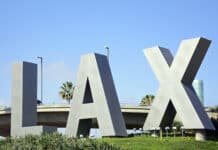By Erik Eloe
From the June 2018 Issue
Providing shuttles for employees can be a very challenging responsibility for facility managers. Or it could deliver a welcome uptick in convenience, safety, and worker efficiency. Much depends on how the shuttles are operated. This article will cover various types of shuttle operations: inter-corporate campus, office to local conveniences, and public transport to office.
Program Options
Corporate Campus Shuttles. On a large campus, when employees regularly have to drive or walk from facility to facility, much time gets wasted. Inter-campus shuttles enhance efficiency and safety, while providing shelter from bad weather. They also help employees who are in wheelchairs or have difficulty walking.
For example, a corporate headquarters outside of Chicago has shuttles that run continuously, making eight stops during work hours to move employees between the many buildings on their large corporate campus. The company reaped the following benefits when it switched from operating its own corporate campus shuttles to using a provider with a fleet management plan: enhanced passenger experience; fewer administrative tasks; better care of vehicles; increased vehicle lifespan; safer operation; and reduced costs and more efficient use.
Shuttles To Local Conveniences, Satellite Offices. At the headquarters mentioned above, shuttles also transport employees to and from a local fitness center. Employees value this perk, and the employer doesn’t have to bear the cost of an on-site employee fitness facility. Shuttles can also make rounds to nearby restaurants, banks, shopping, and medical facilities, so that employees don’t have to use their own gas, wrestle noontime traffic, and hassle with parking. In addition, those who take public transit or carpools to work can still get out at lunch.
Some companies with suburban headquarters are establishing downtown outposts to draw skilled, younger workers who want to live and work in the city.1 Shuttle service between these locations can facilitate meetings or other functions that take place at the headquarters.
Shuttles To/From Public Transportation. Increases in public transit use have been seen across the United States in cities such as Seattle, WA, Minneapolis, MN, and Albany, NY, with record-breaking ridership in St. Petersburg, FL and Oakland, CA.2 A facility that isn’t within walking distance of public transportation and other conveniences can be at a disadvantage for attracting and retaining tenants and employees. For example, one source notes that 78% of millennials believe having their workplace near transit is important.3 Providing shuttle service to and from public transportation to a work facility can be a smart choice with benefits like these:
- Attracting a wider range of people, especially those who prefer not to drive or are unable.
- Employees who save time and money using public transit tend to be more content at work. The stress of driving in rush hour traffic is alleviated, allowing them to be more productive on the job. Also, public transportation saves employees gas and car maintenance costs. A two-person household can save an average, of $10,000 per year by downsizing to one vehicle.4
- Supporting the environment by using alternative fuel shuttles and supporting the increasing number of people choosing not to drive cars. In the U.S., public transportation saves 4.2 billion gallons of gas annually and lowers carbon emissions by 37 million metric tons—the amount of electricity used annually by New York City, the District of Columbia, Atlanta, Denver, and Los Angeles combined.5
- Advertising on shuttle buses can be wrapped with company logos and messaging to get branding “mileage” when they’re out on busy streets. An American Trucking Association study revealed that vehicle ads generate nearly 5,000 visual impressions for every hour driven on a city street.6
Cost Management, Technology Tools
A shuttle provider using a vehicle management system has the ability to track mileage, repairs, preventive maintenance, and spending. Advance warnings—such as oil change or new tire alerts—prevent breakdowns and minimize costs. Use of this system reduces the cost of repairs and increases the average lifespan of the shuttles.
Vehicles can also be equipped with a camera/recording system, which helps to increase safety and lower insurance costs. Cameras on board vehicles can capture accidents and behavior issues as well as help train drivers. This technology has been shown to reduce “at fault” vehicle collisions by almost 60%, which allows the shuttle company to provide services at lower costs. Access to vital accident investigation data also helps save on insurance, maintenance, and repairs. An additional benefit is increased trip comfort and safety for passengers.
Mobile apps can track shuttles via GPS so that riders see where the shuttle is and know actual arrival and departure times. This saves people from wasting time waiting, and enables them to stay inside, out of the elements, until the shuttle is near. Historical data can be used to ensure that extra shuttles are put in service for busy times.
Wi-Fi can be made available on shuttle busses for the convenience of riders who want/need to stay connected for work or personal reasons.
Additional cost savings are possible with the use of alternative fuel shuttles, which may qualify for Federal or local government subsidies and other incentives. The shuttle provider can assist facilities in determining upfront and ongoing costs and give advice on whether subsidizing or providing free shuttle service is a more cost-effective option.
In choosing a shuttle service provider, facility managers should ask about the provider’s approach to determining the most efficient routes, hiring and training their employees, use of technology, and vehicle choice and care. The right operator will implement best practices at the facility—with experience and know how at the wheel, smooth shuttle operation is ensured.
References
1 Crain’s Chicago Business
2 CNN
3 U.S. PIRG
4 Ibid
5 American Public Transportation Association, Public Transportation Benefits
6 American Trucking Association study, The Visual Impact of Trucks in Traffic
 Eloe is a regional director of business development for ABM, a provider of facilities solutions throughout the U.S. and globally. Based in Chicago, IL, Eloe began his career in parking and transportation management more than 10 years ago. He joined ABM in 2012 and has implemented and developed a multitude of transportation and parking management operations. Eloe is now involved with all of ABM’s service offerings. He has a Bachelor of Arts degree in business management from Maranatha Baptist University’s School of Business.
Eloe is a regional director of business development for ABM, a provider of facilities solutions throughout the U.S. and globally. Based in Chicago, IL, Eloe began his career in parking and transportation management more than 10 years ago. He joined ABM in 2012 and has implemented and developed a multitude of transportation and parking management operations. Eloe is now involved with all of ABM’s service offerings. He has a Bachelor of Arts degree in business management from Maranatha Baptist University’s School of Business.
Do you have a comment? Share your thoughts in the Comments section below or send an e-mail to the Editor at acosgrove@groupc.com.





















![[VIDEO] Collect Asset Data at the Speed of Walking a Building](https://facilityexecutive.com/wp-content/uploads/2024/02/maxresdefault-324x160.jpg)
My boss told me that he would like to increase employees’ attendance and productivity, but he hasn’t thought about an idea. I like how you said that shuttle buses can help have content employees at work. I will recommend him to think about getting used buses to offer employees’ transportation so we can all be on time and also be happier at work.
Very interesting article. I have been looking for some perspectives on shuttle for employees and this was right on point.
I look forward to reading more or offering some of my thoughts.